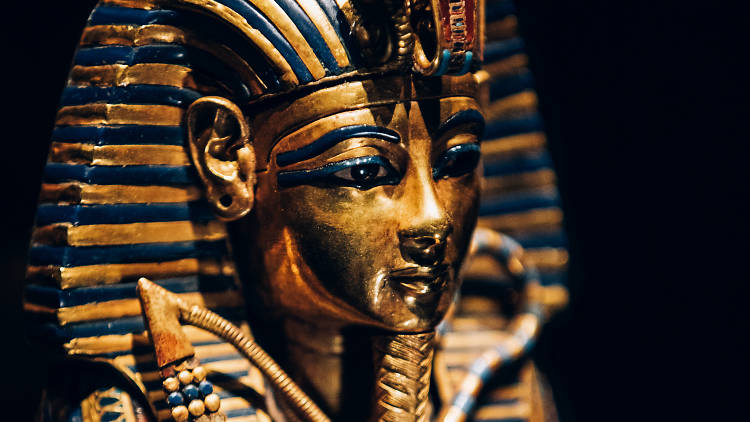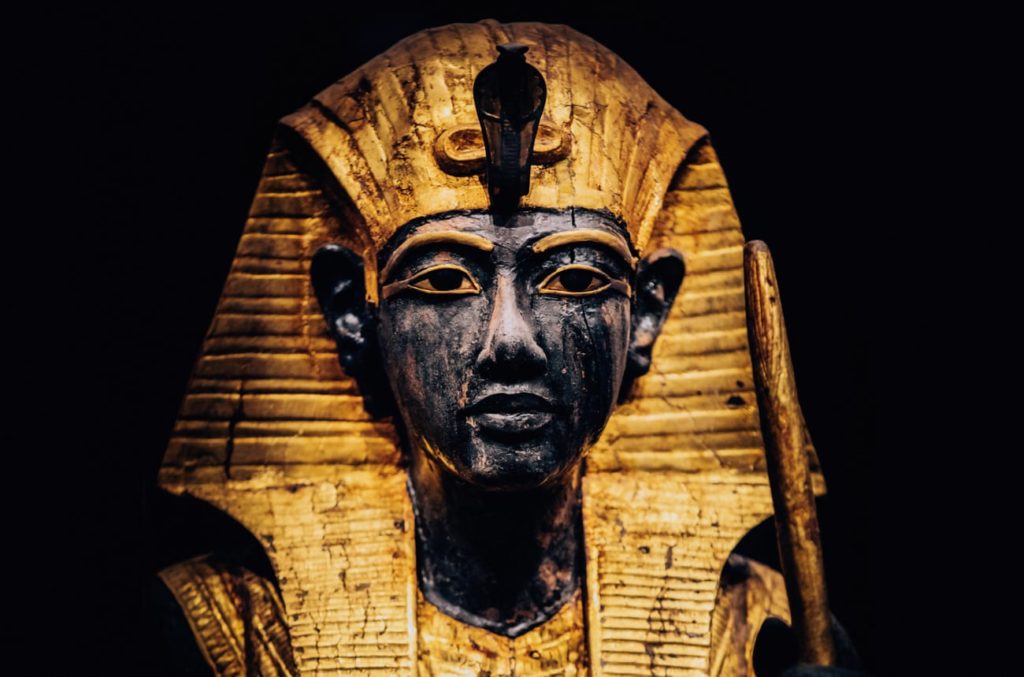Tutankhamun: Treasures of the Golden Pharaoh
WHAT: Tutankhamun: Treasures of the Golden Pharaoh
WHEN: 2 November 2019 – 3 May 2020
WHERE: Saatchi Gallery (Duke of York’s HQ, King’s Rd, Chelsea, London SW3 4RY)
PRICE: £24.50-28.50 (Adults)
OUR RATING: Do It!

Credit: IMG
“At first I could see nothing, the hot air escaping from the chamber causing the candle flame to flicker, but presently, as my eyes grew accustomed to the light, details of the room within emerged slowly from the mist, strange animals, statues, and gold – everywhere the glint of gold.” – Howard Carter (Archaeologist who discovered Tutankhamun’s tomb)
Gold is timeless –

Credit: IMG
For those who have seen past iterations of travelling Tutankhamun exhibits, much of what is on display will be familiar: the canopic coffinette, a storage vessel for the embalmed organs of the King, has been emblazoned upon the literature of many of these blockbuster shows. And yet, new objects are carefully and helpfully marked, making the repeat visitor feel as if they are on a treasure hunt, discovering both old and new artifacts.
Whilst most people are attracted to the shining bullion all around them, important everyday items paint a different picture of the Pharaoh. In Tutankhamun’s reed “pen” case, we can imagine a young boy sitting down with his tutors and learning about what it takes to rule a mighty empire, whilst throwing sticks and bows attest to more leisurely (or warlike) pursuits. Undoubtedly, all these objects also carry ritualistic significance, but one could just as easily imagine them being used by the young Pharaoh.
To the seasoned scholar, this exhibition does have its drawbacks. A (paid) photo opportunity no doubt brings in much needed revenue, but somehow cheapens the overall experience. An epic video introduction, like much of the labelling, is high in floral language, weak on the facts. Speaking of facts, we spotted several misspellings and misunderstandings on the labels (a reference to the god “Atem”, which, in this context, should clearly have read “Aten,” the solar disc deity). To the ordinary visitor, these oversights might seem small, but to anyone knowledgeable of the period, they are most disappointing for such a well-designed exhibition.

Credit: IMG
The exhibition itself is laid out across multiple floors and with intricate vinyls perfectly framing objects in the black-box style rooms. It is true that due to this multi-level approach, you lose your immersion in the world of the tomb each time you progress to a new gallery, but this is not a major limitation.
Final Thoughts: As potentially the last time you will be able to see Tutankhamun’s “wonderful things” outside Egypt, this is a must for Egyptophiles of all ages. Even those with more knowledge of the subject will appreciate seeing familiar artifacts and some new ones. A glittering spectacle that will amaze all who gaze upon it.
P.S. The companion volume to this exhibition, Tutankhamun: The Treasures of the Tomb, by Dr. Zahi Hawass is breathtaking in its detail and completed with sumptuous photographs by Sandro Vannini. Simply stunning!